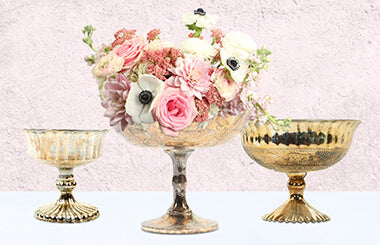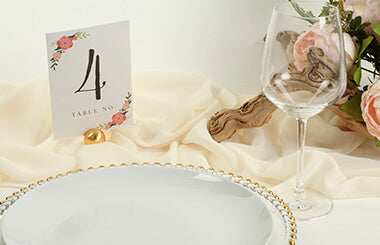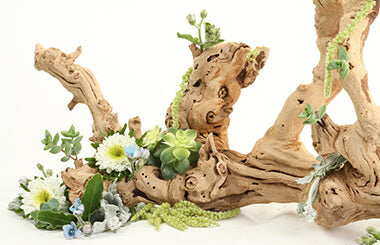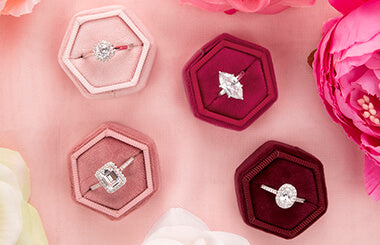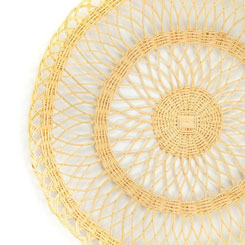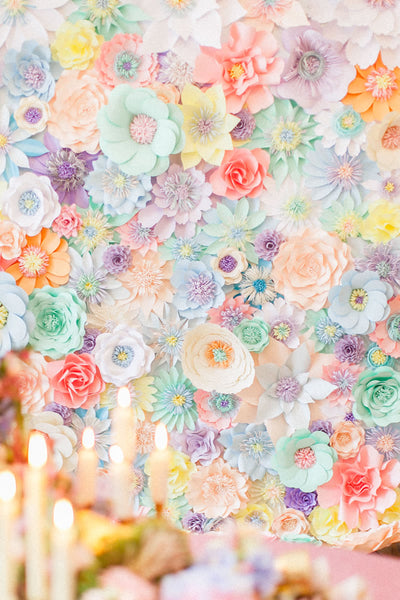Get The Latest Updates On New Arrivals, Sales + Promotions
The Ultimate Wedding Checklist - What To Start Planning 1 Months Out

Things really start to pick up with our wedding checklist this month, but don’t panic! We have broken down the items you need to attend to this month so you can mark them off with confidence in the final weeks leading up to your big day.
Make Sure Everyone Has Had Their Final Fitting
Have you been badgering your bridal party to purchase or rent their outfits? Your job isn’t done yet! You now have to check in and make sure that they have had their final fitting. If they haven’t, make sure they get in and get everything altered within the first week or two of this month.
If your groomsmen haven’t rented their tuxes or suits yet, don’t panic. You still have time. These items can be rented much closer to your wedding date. Just make sure they go in within the first or second week of this month so there is still time to deal with any mistakes.
Key takeaways:
- Bridesmaids should have their alterations completed as soon as possible.
- Groomsmen still have time to rent formal wear, but make sure they do it as soon as possible so that alterations can be made and mistakes can be addressed.
Get Your Marriage License
Your union won’t be legal unless you get a marriage license. Unfortunately, getting it isn’t as easy as printing it at home.
You will have to go to the city hall, the clerk's office, or the marriage license bureau. To make things even more complicated, you have to get a marriage license where you’re getting married—not where you live. That can be difficult to do if you don’t live where you’re getting married. That’s why it’s important to look into getting your license when you still have a few weeks to go before your wedding. It gives you time to look up where you need to get your license so you can make the appropriate plans, even if it means going in the morning of your nuptials at a destination wedding.
It’s also a good idea to look into the marriage laws in various states. You will discover if you have to bring your birth certificate or a social security card, how long you have to wait after you apply for an application to get married, and how much it's going to cost.
Key takeaways:
- You have to get your marriage license where you are getting married—not where you live.
- Look into the marriage laws where you are getting married to make sure you have everything you need.
Finalize the Seating Chart
In month three we suggested that you record RSVPs as they come in. Hopefully you took our advice to heart and know exactly who is coming to your wedding and who isn’t. If you haven’t already, now is the time to check in with guests who haven’t responded because you will have to give the final count to your caterer this month.
You also have to know exactly who is coming to your wedding because you have to finalize your seating chart. This can be a surprisingly difficult job, so giving yourself a few weeks to work out the kinks is a good idea.
Start with the most important people first. That includes your bridal party and immediate family members. Then find seats for other family members and friends.
Choose seats carefully. Try and seat family and friends who already know each other together, and avoid seating people who may feud close to each other.
Consider seats for kids very carefully. Although kid tables sound like a good idea, you may be able to avoid potential meltdowns by allowing children to sit with their parents.
Visualization is important while you’re creating a seating chart. Draw the layout of tables and see exactly where you’re placing everyone. You may realize that your difficult uncle is seated a little too close to a feisty aunt.
Once you have determined exactly where everyone will be sitting, you have to print place cards and determine how they will be displayed at your reception.
Is creating a seating chart giving you a headache? Consider allowing everyone to sit where they want! Just make sure you have plenty of extra seats if you go this route so guests aren’t stuck sitting next to people they are uncomfortable with because there aren’t any open seats left.
Key takeaways:
- Check in with guests who haven’t responded to finalize your guest list.
- Start by seating your bridal party and immediate family members.
- Seat more distant relatives and friends last.
- Let those who know each other sit together to avoid tension.
- Consider allowing children to sit with their parents instead of at a kids table.
- Draw the layout of tables so you can see exactly where everyone is sitting.
- Print place cards once the layout has been finalized.
- Consider an open seating chart if you're struggling with a traditional seating chart.
Purchase Drinks
If you go with professional bartender services, buying your own drinks may not be necessary. However, if you decide to DIY the drinks at your reception, or you want to purchase special bottles for toasts or the head table, now is the time to go shopping.
In general, you will want to assume that each of your guests of legal drinking age will consume about one drink per hour. Based on that, you can come up with about how much alcohol you need.
Although it may seem reasonable to purchase more than you think you’ll need, just in case, make sure this isn’t something you do until you speak with the supplier about their return policy. According to the Alcoholic Beverage Control laws in some states, you may not be able to return unopened alcohol, and most breweries won’t accept returned kegs, even if they haven’t been tapped. You may discover it is better to make sure you have just enough, but no more than you think you will need.
Don’t forget about the extras! You may need to buy cups, glasses, or champagne flutes. Bar napkins are also a smart purchase, as are corkscrews and bottle openers.
Key takeaways:
- Come up with a rough estimate for how much alcohol you will need by assuming each guest will consume about one drink per hour.
- Speak with your supplier to see if they accept unopened bottles, cases, and kegs before you finalize your purchase.
- Make sure you also buy extras, like cups, champagne flutes, and napkins.
Start Packing Everything You Will Need
There are a lot of things you’re going to have to transport to your ceremony and reception spaces. It’s easy for things to get lost or left behind, so the sooner you start packing all that stuff, the better off you’ll be.
It’s a good idea to create a master list of all the items you need to bring. It includes everything from your cake stand to DIY decorations, table cloths, wedding programs, and of course, your dress. Make sure you cross each item off the list as it finds its way into a box or a bag.
Make things easier the day-of and label all of your boxes and bags. You should also store them in the same spot so nothing gets left behind. If you have a lot of boxes, it’s also a good idea to make a list of all the boxes you have. That way, you can mark each of them off the list as they are transported to your reception and ceremony spaces.
Key takeaways:
- Create a master list of all the items you need to bring and cross things off as they get packed away.
- Label all of your boxes and bags so things are easy to find the day-of.
- Store them in the same spot so nothing gets lost or misplaced.
- Make a list of all the boxes you have and cross them off as they are transported to your ceremony and reception spaces.
Print Menus and Wedding Programs
The last month of the planning process includes lots of printing! Not only do you have to print and assemble your place cards, you also have to print menus and wedding programs.
Let the type of dinner you’re hosting be your guide. For example, each plate may get its own menu card if you're hosting a formal affair. More relaxed parties that feature buffets may simply have items labeled on the buffet line, while cocktail and appetizer menus may be scattered on tables and shared among guests.
Wedding programs should also be printed that outline the schedule of events at your ceremony. Your wedding program is also the perfect place to list important members of your bridal party and your immediate family.
No matter what you’re printing, make sure that you print extras, just in case, and don’t think that your menus or wedding program needs to be complex. Stick to the basics and only print on one side of the card. In both cases, guests should be able to skim the content without the need to turn pages or read lengthy paragraphs.
Professional menus and wedding programs can be ordered, but don’t feel like you have to drop a bunch of money on embossed paper. Lovely menus and wedding programs can easily be created by you and sent to a print shop where they can be professionally printed en masse.
Key takeaways:
- Consider the type of dinner you're hosting before deciding what kind of menus need to be printed.
- Include a schedule of events, as well as important members of your bridal party and your immediate family on wedding programs.
- Make sure you print extras.
- Stick to the basics—guests should be able to skim content easily.
- Consider creating your own menus and wedding programs instead of paying a lot of money for someone else to do it.
Create an Emergency Kit
You want everything to go off without a hitch on your wedding day. Hopefully, that’s exactly what will happen! Just don’t plan on it. A lot can go wrong when so many things have to come together the day-of!
Do yourself a favor and start creating a bride essentials kit. It should include everything you think you might need. Things like a sewing kit, fashion tape, breath mints, and bandages should go in your kit. Of course it should also include things like lip balm, a brush, and hairspray.
Stressed out enough as it is without having to think about putting together your own emergency kit? Enlist the help of your maid of honor, your bridesmaids, or family members to get your kit ready ahead of the big day.
Worried that something is going to be left out? You can also purchase pre-made emergency kits. Just make sure you go through the contents and add things if you feel like things were left out.
Key takeaways:
- Include everything you think you might need in your emergency kit.
- Ask your maid of honor, bridesmaids, or family members to assemble your kit so you don’t have to.
- Consider purchasing a pre-made kit, but make sure you add other things to the kit if you think certain items are missing.
Confirm Details With Vendors
We have talked about various vendors throughout our wedding checklist and encouraged you to follow their directions for each step in their particular process. Hopefully you have been following our advice and everything is all lined up and ready to go, but things can still fall through the cracks. Now is the time to revisit your master list of hired vendors and make sure that you have confirmed details with each and every one.
After a look at your list, you may discover that you need to confirm your floral arrangements, decide on the icing color for your cake, or report your final head count to your caterer.
Even if you think you have everything all squared away, you may want to give each and every one of your vendors a call anyway. You can ask them if there’s anything left you need to do, if you need to help them figure out how to get into your venue to set up, or discuss a plan B in case of bad weather.
Key takeaways:
- Look at your master list of hired vendors and reach out to any that you have unfinished business with.
- Reach out to all of your vendors, even if you think everything is planned, to make sure there isn’t anything you have forgotten or need to know.
Break in Your Wedding Shoes
Last month was the perfect time to try on your dress with all of your accessories to make sure your strapless bra doesn’t show and your garter isn’t scratchy. It’s true that you aren’t going to be as comfortable as you would be in sweats lounging on the couch at home, but you shouldn’t be in pain either. Although your new shoes may match your ensemble perfectly, if they make your feet hurt, you won’t be wearing them long.
Do yourself a favor and break in your wedding shoes. Wear them around the house in the evenings before your wedding day. It will ensure they stretch out, and it can help you identify problem areas. For example, you may realize that your pumps could use an insole or you should wear a piece of tape on your heels to prevent blisters.
Not wearing heels? If you’re wearing any kind of new shoes, you should take some time to break them in. Even flats can give you blisters or hurt the balls of your feet!
Key takeaways:
- Wear your wedding shoes around the house to break them in ahead of your wedding day.
- Identify and address problem areas so you prevent blisters and other issues.
- Even if you don’t wear heels, you should still take the time to break them in—even flats can give you blisters!






